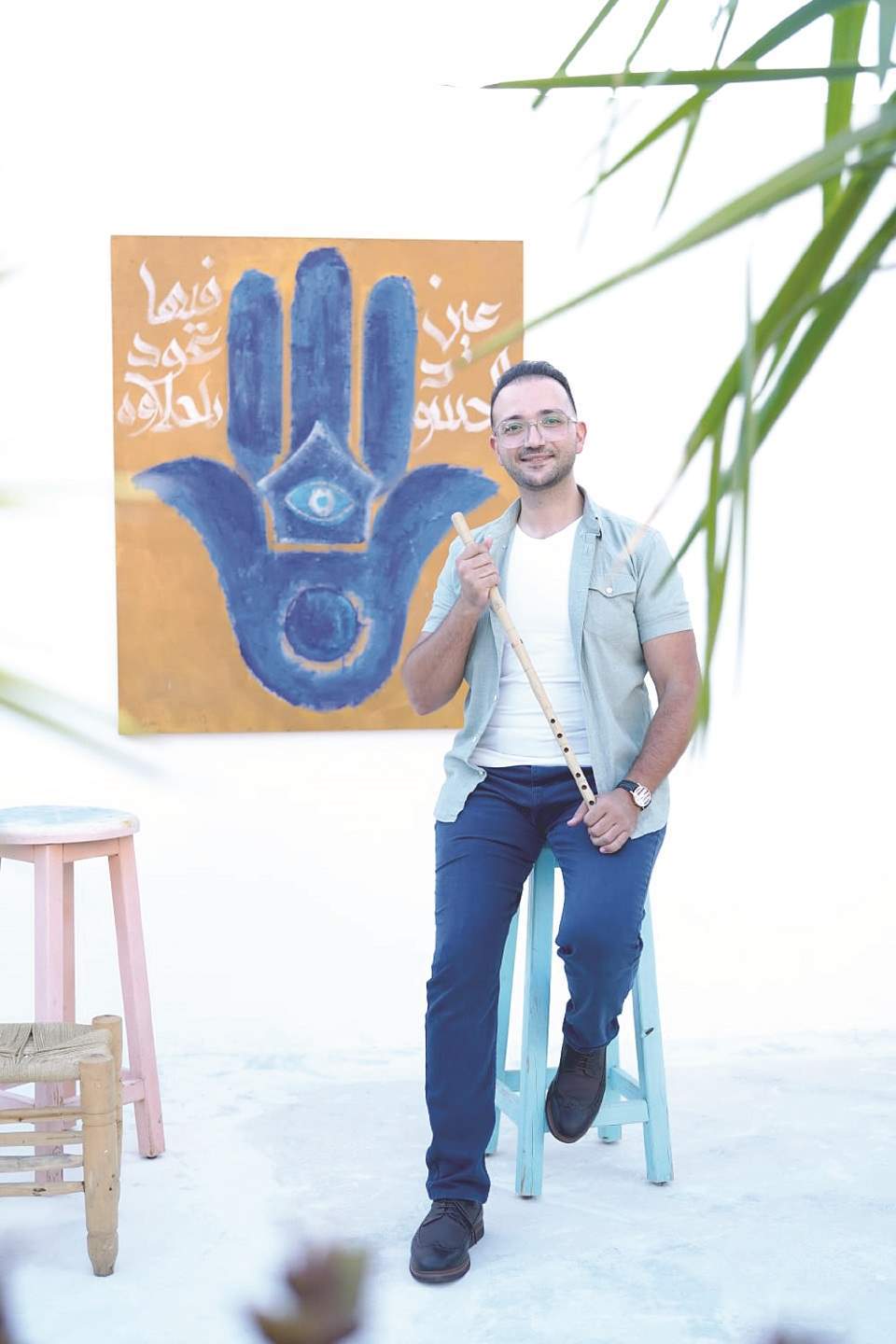AMMAN —
Laith Suleiman, a Jordanian musician and nai player, started playing the nai, a traditional flute, since he was 11 years old.
اضافة اعلان
“The nai instrument caught my attention, its use in the Levant’s oriental music,” Suleiman told
Jordan News in an interview.
The nai is one of the basic instruments in Arabic music.
Made out of giant reed or hollow cane, this end blown flute has five or six finger holes and one thumb hole. It is the oldest musical instrument still in use for 5,000 years.
There are several types of Arabic nai, each differs in tone.
The Arabic nai differs from the Western flute in design. The flute consists of eight finger holes and 12 keys that allow the player to vary the pressure on the keys which changes the tone of the instrument. “The flute is a western development of the nai,” Suleiman said.
 Jordanian musician and nai player Laith Suleiman. (Photos: Handouts from Laith Suleiman)
Jordanian musician and nai player Laith Suleiman. (Photos: Handouts from Laith Suleiman)
He said that a musician is attracted to this instrument rather than choosing it. “My father loves oriental singers such as Umm Kulthum, Abdel Wahab, and Farid Al-Atrash, and my family encouraged me to study music,” Suleiman said. He said that he was the only student in Jordan to specialize in the oriental nai.
Suleiman holds a master’s degree in Arabic music from the Higher Institute of
Arabic Music of the Academy of Arts in Cairo.
He also works to use oriental music in music therapy. Suleiman holds a diploma in music therapy. “I use an oriental instrument, the nai, for music therapy, for mental illnesses and children suffering from nervous disorders,” he said.
Suleiman said that he combines the colors and the science of music and sound. He said that each person has a specific color that affects the development of their body, as well as how each person adapts, attracts, or repels these colors.
“Music is waves that enter the human body, and the body receives it or rejects it with its energy. The nai is the only oriental end-blown instrument that affects humans because it is made out of nature,” Suleiman said.
With his partners Rabee Zureikat and Serene Huleileh, Suleiman founded Bait Al Nai in 2017, which is a place to manufacture and teach the nai. They also hold evenings of nai performances.
“The nai is the first oriental instrument made in Jordan at Bait Al Nai, and it is made from local resources,” he said. “Bait Al Nai is not a conservatory. The students at Bait Al Nai get to know the instruments of oriental music and their connection to the homeland and their identity.”
Suleiman said that with Bait Al Nai students visit places where reeds grow and are plentiful, such as Wadi Shuaib, to select the appropriate reeds to create their own nai with. “My relationship with my instrument is as a lover, as I’ve been called the ‘nai lover’,” he said.
His relationship with his nai is a strong, spiritual one, “like the breath that comes out of the musician,” Suleiman said. Regardless of his feelings, whether they are feelings of joy or sadness, they are reflected through the nai, he said.
“The nai is the closest instrument to the soul, as playing it comes from the heart of the musician,” Suleiman said.
Read more
Music



